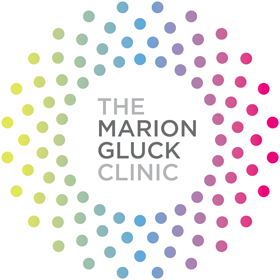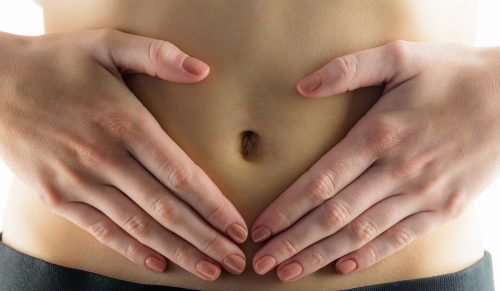
SAD (Seasonal Affective Disorder), sometimes referred to as ‘winter depression’, shares many symptoms with depression such as low mood, low energy, feelings of despair and even suicide. SAD however differs because it can greatly improve with physiological factors unlike clinical depression which is mainly treated psychologically. As a doctor I see many patients suffering feelings of despair in the winter months and feel it is important to shed some light on SAD. My hope is that you may be able use these tips to lift your mood by addressing some of the root causes first before having to reach for antidepressants.
Firstly, a bit on the history of SAD
The term ‘SAD’ was coined in 1984 by psychiatrist Dr N Rosenthal in his study on the success of light therapy. In this paper he defined SAD as a distinct clinical entity. The first patient he successfully treated with light therapy was engineer, Herb Kern. Herb had suffered severely with seasonal depression, and had undergone years of psychoanalysis yet he could not accept his analyst’s explanation that it was due to a feeling of being let down by Mother Nature with her barren trees in the winter. It turned out that he was right and more studies followed.
The role of melatonin
Before we get onto light therapy as a treatment, let’s first discuss the role of melatonin as it is integral to why light therapy works. Dr N Rosenthal, a psychiatrist relocating to New York from South Africa, noticed his unusually low mood for three consecutive winters and collaborated with a Dr. A Lewy, who was researching the hormone melatonin. Melatonin is a hormone that regulates sleep. Lewy hypothesised that seasonal changes may influence our 24 hour body clock (circadian rhythm) and the timing and duration of melatonin production by the pineal gland in the brain.
Prior to the discovery of SAD, scientists had assumed that we were far too evolved to be affected by our circadian rhythm in the way other mammals can be. As the duration of daylight hours varies with seasons, this shift in the position of sleep on the body clock can change the timing and duration of melatonin production. Darkness increases the production of melatonin whereas bright light decreases it, so we may produce more melatonin in winter. Serotonin, the happy hormone, can also be broken down into melatonin. Although the relationship and balance between the two hormones is still unclear, people with SAD may be more likely to have an imbalance of the two and consequently could feel very tired, lethargic and depressed.
Here are 5 ways you can reduce and hopefully eradicate SAD:
- Light Therapy: Our eyes do more than just seeing
Bright light in the morning
Now that we understand how light and dark affect our balance of melatonin and serotonin we can begin to understand how light therapy works. We need bright light in the morning to reset our body clock and decrease melatonin production. This seems to work best with natural light where possible but the high intensity one provided by a light box (that is on the blue/green spectrum) is just as effective. To be effective, a SAD lamp needs to emit light of at least 2,500lx – although most light boxes are now 10,000lx.
It is also important to appreciate how the connection between our eyes and brain can change signalling regulating melatonin production. This is important if you want to optimise your sleep and circadian rhythm regardless of SAD. This is why it is recommended to face the light box with your eyes open – it is important for your eyes to be exposed to the light in order for light therapy to have a full effect.
Soft light in the evening
Conversely, we need our bodies to produce more melatonin to help us sleep in the evening and that’s when the blue light spectrum from our screens and devices (smart phones and computers) is best avoided for an hour before bed time. A darkened room increases melatonin production and improves sleep quality.
Bathing before bed
Most people shower in the morning before work but a hot shower or bath before bed plays an important role in melatonin production. A drop in body temperature or the cooling effect after a hot bath ritual before bedtime causes a melatonin surge. Melatonin supplementation in the evening may also be useful in some people, especially if you are jet lagged or working shifts.
- The role of inflammation
Growing research highlights the contribution of chronic inflammation to low mood. Chronic stress affects our mood and has various molecular signatures associated with increased inflammation in the brain. Recent discoveries may underpin the fact that some people respond well to certain dietary changes. There have been several reports where eliminating gluten, lowering refined sugars and increasing healthy quality fats can all reduce inflammation, improve mood and cognitive function. Read this month’s piece on “happy gut, happy mind” to find out how to improve your diet. A diet rich in nutrients to optimise brain function and foods high in tryptophan will also increase mood. See our tryptophan breakfast recipe to start your day off in the right mood. If you’re worried about inflammation you can take our food inflammation test, click here to book an appointment.
- The role of hormones
We also often underestimate that our brains and especially the emotional centre are very rich in steroid hormone receptors and I often wonder if it is these hormone fluctuations that may contribute to the higher rates of depression we see in women. Moreover, sex hormones also interact with neurotransmitters (chemical messengers) that influence our mood. If you feel that SAD does not really resonate with you but more that your moods centre around your cycle it may be time to get your hormones checked. Hormone balance can greatly reduce debilitating moods experienced by many woman at certain times of their cycle. If you’d like to get your hormones tested click here to book an appointment.
- Human Connection
Hibernating mammals don’t suffer with winter depression, however studies show they can behave rather strangely if disturbed and put under pressure. This says a lot about human nature in our pressured modern existence! If you can’t escape to a sunny place this winter, how will you be nurturing the side of you that would rather hibernate? A hearty casserole, a good book by the fireplace or most importantly, will you reach out to a friend or someone to talk to? Because sometimes the most important time to do it is when you really don’t feel like it. Social isolation is now a greater risk factor for chronic disease than smoking! So remember to reach out. If you’d like to talk to someone about ongoing depression that does not feel to you like it is seasonal we can help. Book an appointment here.
- Other things to check:
- Vitamin D: Check your Vitamin D levels and supplement if low, click here to read why vitamin D is important
- Omega 3: (1000mg daily) Has showed benefit in research studies for depression
- 5 hydroxy tryptophan: Is a precursor to serotonin, the happy hormone, and can aid sleep if taken at bedtime
- Exercise: Are you getting enough exercise? Exercise stimulates the production of serotonin. Make sure you choose exercise that is suitable to you as over exercise could also have negative effects.
- Antidepressants: Also work by increasing serotonin and can be used to treat depression and sometimes SAD. It is always best however to explore underlying causes as antidepressants may act as a veil between you and your emotions but are not curative.
To read more about SAD see the SADAssociation website. We’re also here to help and have an in-house naturopath, psychotherapist and I myself (Monica Lascar) am one of the specialists in hormone therapy. Book and appointment today.






